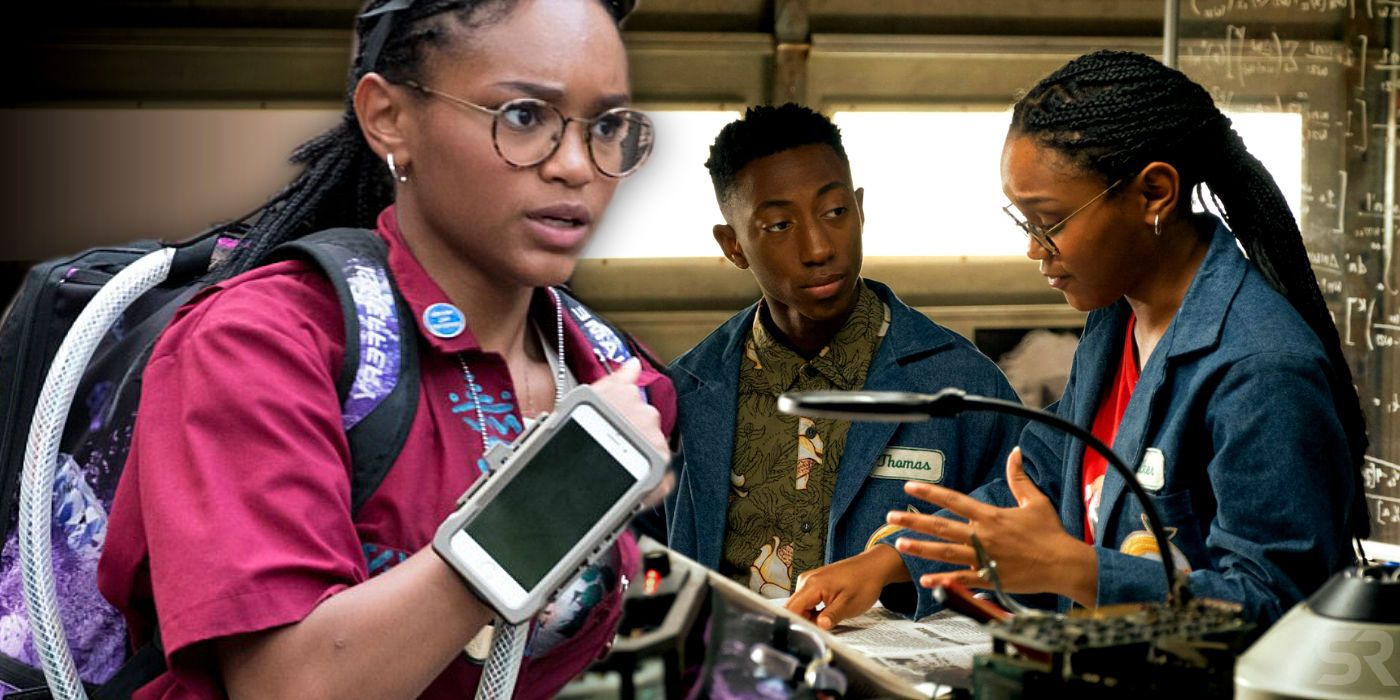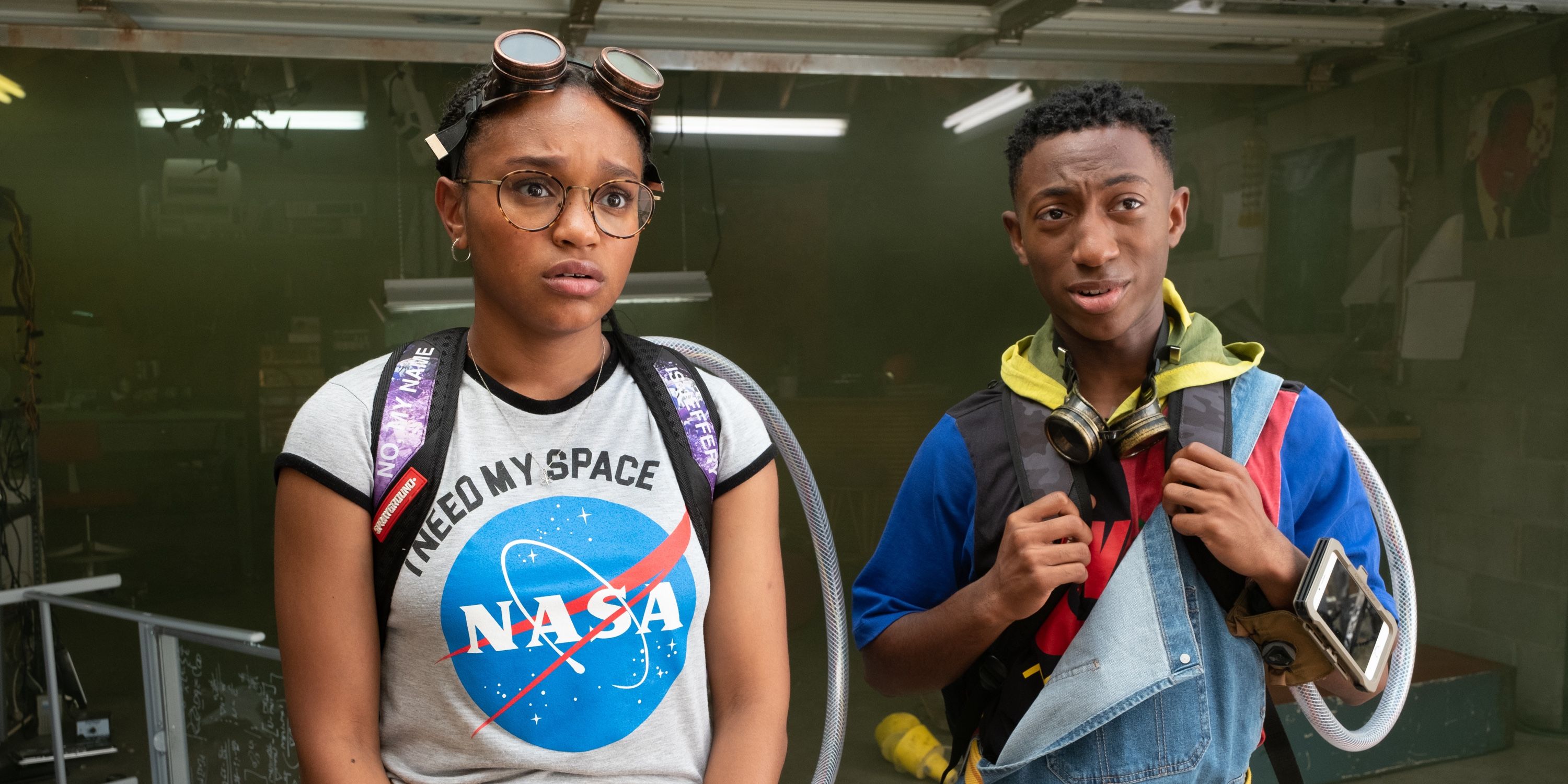Netflix’s See You Yesterday movie uses a science fiction premise for a broader commentary about sociopolitical issues. But how exactly does See You Yesterday's time travel work, and what does the ending mean? Directed by Spike Lee protégé Stefon Bristol, See You Yesterday stars Eden Duncan-Smith as Claudette "CJ" Walker and Dante Crichlow as Sebastian J. Thomas.
The high school students are fully invested in time travel and scientific possibilities; however, the murder of CJ’s brother Calvin (Brian Bradley aka Astro) deeply impacts both characters and changes the course of their lives. See You Yesterday pays homage to time travel films of the past, all the while providing an enlightening take on societal issues such as racial conflict in modern day Brooklyn. The main characters in See You Yesterday travel back in time, but rather than brush aside the science of it all, the Netflix movie leans into its premise more than expected. And so, See You Yesterday fully explains how its time travel works.
In fact, Bristol makes sure to establish the time travel specifics early on while the protagonists prepare for a school expo. During a “Temporary Relocation Test,” CJ and Sebastian discuss how their invention operates: protons attach to the rotor circuit in their back pack/time travel contraption, and the science creates a quantum foam that opens a wormhole. In short, the characters explain the specifics and how they’re allowed to only go one day into the past. Astrophysicists may ultimately chime in about the logic, but the film does makes sure to establish the fundamental rules.
For the most part, CJ and Sebastian ride the same information highway in See You Yesterday. They pinpoint how poor tubing relates to the force of protons and affects their prototype. But just as they become closer and closer to forever altering history, Calvin’s murder changes everything. Incidentally, CJ and Sebastian clash about why they’re going back in time; CJ has personal reasons, which Sebastian seems to understand. Still, he’s skeptical about what could happen if they don’t respect the scientific rules. This sets the tone for more scientific exposition, which benefits See You Yesterday as a whole. CJ and Sebastian discuss how they need to change the spin of electrons, and how antimatter colliding with matter will provide the pure energy that they’re looking for. Meaning, they’ll essentially have 10 minutes to accomplish their mission before a wormhole begins to collapse. This fact becomes crucial for the second half of See You Yesterday.
CJ and Sebastian fail while attempting to manipulate the past. Calvin dies, and then Sebastian dies while time traveling. Because of the science involved, CJ has little room for error while making yet another journey into the past; she has to be almost perfect with her time management. Fortunately, See You Yesterday effectively connects the narrative dots while explaining its time travel logic and character motivations.
In See You Yesterday's ending, Sebastian’s time travel death brings Calvin back to life. CJ struggles with the drama of it all, but she’s fully aware that science can negate what appears to be real. Incidentally, a supporting character named Eduardo becomes critical, as he constructed a quantum circuit board that can benefit the mission. See You Yesterday explains the science behind his invention, which includes an individual time splice that will allow CJ to avoid her past self during 10-minute exploration trips. And before CJ sets off, Calvin says, “See you yesterday." Soon thereafter, Calvin becomes self-aware in the not-so-distant past and sacrifices himself for the greater good. While he may not understand the larger picture, Calvin balances out the original storyline and inadvertently brings Sebastian back to life. See You Yesterday ends with CJ making one final trip into the past and figuratively running towards fate. Whatever happens, she’s forever connected to her brother Calvin, evidenced by the dog tags she wears around her neck; a spiritual reminder of her brother, and one that’s not necessarily connected to science whatsoever.


